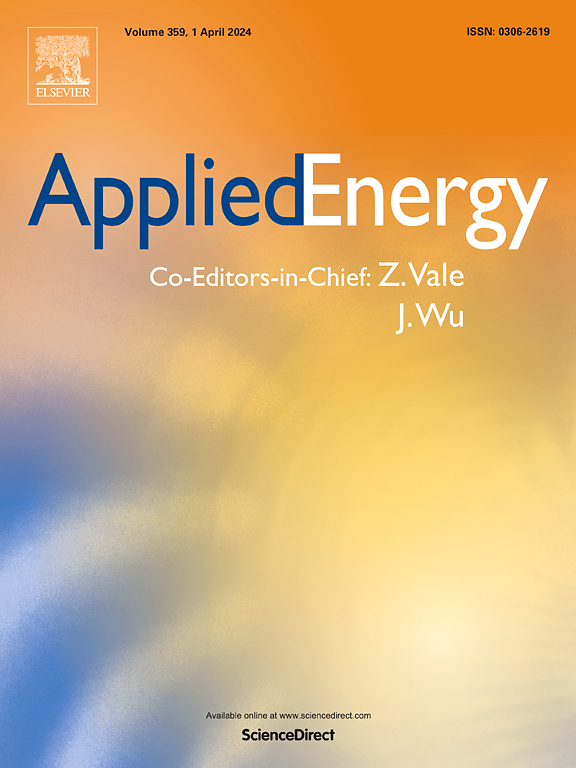Advances and prospects of low temperature LiS batteries
IF 11
1区 工程技术
Q1 ENERGY & FUELS
引用次数: 0
Abstract
In the forefront of energy storage technology, there remains a significant demand for high energy and high power density batteries capable of stable operation across a wide temperature range. Lithium‑sulfur batteries are anticipated to lead the energy storage sector due to their exceptional energy density. Nevertheless, enhancing their performance in cold environments is crucial for broader adoption. This paper provides an in-depth analysis of the fundamental failure mechanisms and key challenges faced by lithium‑sulfur batteries under low-temperature conditions. The primary issues identified include the difficulty of lithium ions traversing the desolvation barrier, erratic nucleation and deposition of lithium ions, polysulfide compound aggregation, and the barrier effect of Li2S films as sulfide precipitates on electrodes. Addressing these critical challenges, this study thoroughly reviews the current research progress, encountered obstacles, and future directions for lithium‑sulfur batteries in low-temperature environments. The paper explores research findings on various battery material components, with a specific focus on the potential of sulfur as a cathode material, advanced electrolytes (including solvents, electrolyte salts, and additives), and lithium metal for anode applications. The performance of electrochemically inactive components, such as separators and interlayers, is also assessed at low temperatures. Moreover, in light of the future development of practical lithium‑sulfur batteries for low-temperature applications, several improvement suggestions are proposed. These recommendations aim to accelerate commercialization and foster innovation in the lithium‑sulfur batteries field.

低温锂离子电池的研究进展与展望
在储能技术的前沿领域,对能够在宽温度范围内稳定工作的高能量和高功率密度电池的需求仍然很大。由于锂硫电池具有超高的能量密度,预计将在储能领域占据领先地位。然而,提高其在寒冷环境中的性能对于更广泛地采用至关重要。本文深入分析了锂硫电池在低温条件下的基本失效机制和面临的主要挑战。发现的主要问题包括锂离子难以穿越脱溶屏障、锂离子成核和沉积不稳定、多硫化合物聚集以及作为电极上硫化物沉淀的 Li2S 薄膜的屏障效应。针对这些关键挑战,本研究全面回顾了低温环境下锂硫电池的当前研究进展、遇到的障碍和未来发展方向。论文探讨了各种电池材料成分的研究成果,重点关注硫作为阴极材料、高级电解质(包括溶剂、电解质盐和添加剂)以及阳极应用中的金属锂的潜力。此外,还对电化学不活跃部件(如分离器和夹层)在低温下的性能进行了评估。此外,针对低温应用中实用锂硫电池的未来发展,还提出了一些改进建议。这些建议旨在加快锂硫电池领域的商业化进程并促进创新。
本文章由计算机程序翻译,如有差异,请以英文原文为准。
求助全文
约1分钟内获得全文
求助全文
来源期刊

Applied Energy
工程技术-工程:化工
CiteScore
21.20
自引率
10.70%
发文量
1830
审稿时长
41 days
期刊介绍:
Applied Energy serves as a platform for sharing innovations, research, development, and demonstrations in energy conversion, conservation, and sustainable energy systems. The journal covers topics such as optimal energy resource use, environmental pollutant mitigation, and energy process analysis. It welcomes original papers, review articles, technical notes, and letters to the editor. Authors are encouraged to submit manuscripts that bridge the gap between research, development, and implementation. The journal addresses a wide spectrum of topics, including fossil and renewable energy technologies, energy economics, and environmental impacts. Applied Energy also explores modeling and forecasting, conservation strategies, and the social and economic implications of energy policies, including climate change mitigation. It is complemented by the open-access journal Advances in Applied Energy.
 求助内容:
求助内容: 应助结果提醒方式:
应助结果提醒方式:


